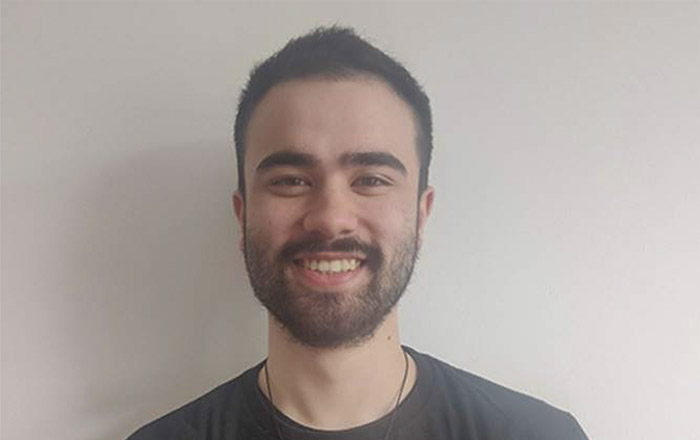These articles are now archived and will no longer be updated.

Aerospace Engineering student Matthew’s design won the £5000 prize from the Engineering for Access competition.
A Swansea University student’s personal experience was the inspiration for his winning entry in a nationwide hunt for the best new innovation in disability products.
Matthew Lillywhite, who studies aerospace engineering, submitted his design for a special metronome to the Engineering for Access competition and has now won £5,000 towards creating a prototype to bring his idea to life.
The haptic metronome would help people with Parkinson’s disease to keep rhythm while walking.
Music is used by therapists as many people with Parkinson’s find listening to strong rhythmic music can improve their walking, prevent hesitations and overcome freezing episodes. It is a condition that Matthew has seen at first hand in his own family.
“My father and grandfather both suffer from Parkinson’s so I wanted to design something that would help these people that I care about.
“I got the idea for the design from my father. My parents like to go on walks and hike together and it is not possible for Dad to listen to the marching band music that could help him keep time when walking. So, I tried to think of a way where he would still be able to get the benefit.”
Matthew wasn’t the only Swansea student to reach the competition’s final stages. Undergraduate engineering student Zachary West was also shortlisted for his design for a device which helps people to learn braille.
Zachary came up with his design after speaking with a blind customer while working in a local café.
“It got me thinking how isolating it must be to lose one’s sight. Many visually impaired people cannot read braille as it can be difficult to learn,” he said.
The annual award, run by personal injury specialists Claims.co.uk and product innovation specialists Bang Creations, tasked undergraduate engineers from across the UK to create a product designed to aid people living with a disability. Students were able to choose the disability they wanted to design for, with other entries tackling epilepsy and deafness.
